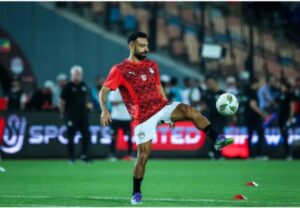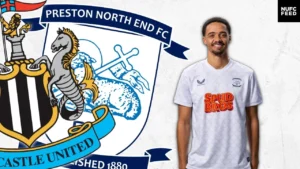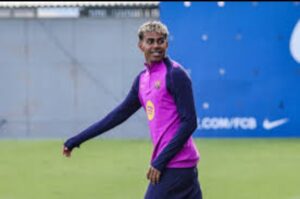
In the world of elite high school basketball recruiting, very few stories capture the public’s imagination like that of identical twins dominating the hardwood together. Mia and Mya Pauldo, rising stars from Morris Catholic High School in Denville, New Jersey, fit this mold perfectly. Standing out as premier basketball prospects in their class, these twins have turned heads with their skill, chemistry, and determination. Yet, in an unexpected twist that has sent ripples through recruiting circles, they faced rejection from some of the sport’s notable programs — including the Tennessee Lady Vols, WNBA’s Atlanta Dream, and Ole Miss Women’s Basketball.
This article dives deep into the journey of Mia and Mya Pauldo: their early beginnings, their rise as top-tier prospects, the impact of those surprising rejections, and what the future might hold for these talented sisters.
Mia and Mya Pauldo grew up in Denville, a suburban town in New Jersey where basketball culture is vibrant but often overshadowed by traditional East Coast hoops powerhouses. From the time they first picked up a basketball, the twins showed uncanny synchronization on the court — a natural chemistry that coaches would later rave about.
Both standing at 5-foot-9, their playstyle complements each other perfectly: Mia’s aggressive driving and scoring ability pairs seamlessly with Mya’s court vision and passing skills. Their complementary talents made them a nightmare matchup for opponents and a dream for any coach to recruit.
At Morris Catholic High School, the twins quickly became cornerstone players. By their sophomore year, they were leading the team in points, assists, and steals, while also serving as vocal leaders off the court. Despite the smaller school size, the Pauldo twins put Morris Catholic on the map by advancing deep into state tournaments and drawing scouts from coast to coast.
By their junior year, Mia and Mya’s names began appearing on major recruiting watchlists. National recruiting services ranked both twins among the top 50 prospects in their class, and analysts were fascinated by their rare twin synergy.
Mia Pauldo was noted for her explosive scoring and defensive tenacity, often drawing comparisons to players like Skylar Diggins-Smith for her versatile guard skills. Mya Pauldo, on the other hand, earned praise for her exceptional basketball IQ, court awareness, and ability to create plays under pressure.
This dynamic duo was projected as the perfect pair to reshape collegiate women’s basketball for any program lucky enough to secure them. Naturally, powerhouse programs from the ACC, SEC, and Big Ten showed interest.
Among these suitors were:
The Tennessee Lady Vols: With a legendary coaching lineage dating back to Pat Summitt, Tennessee remains a dream destination for many elite prospects.
Ole Miss Women’s Basketball: Known for their recent rise in competitiveness and an aggressive recruiting push, Ole Miss represented a new frontier for talent hungry to make an impact in the SEC.
Atlanta Dream (WNBA affiliate interest): Although the WNBA doesn’t “recruit” players in the traditional sense, the Atlanta Dream’s scouting and developmental interest in these prospects indicated professional potential.
Yet, in a surprising turn, all three programs declined to offer scholarships or meaningful roster spots to the Pauldo twins.
The news that Tennessee, Ole Miss, and even the Atlanta Dream’s scouting didn’t pursue Mia and Mya left many fans and analysts scratching their heads.
Several factors may have contributed:
At Tennessee, the Lady Vols have historically recruited heavily at the guard position, where the Pauldo twins primarily play. It is possible that the coaching staff already had commitments or preferred targets at those spots for the coming classes, limiting available scholarships.
Similarly, Ole Miss may have faced roster constraints, especially after recent commitments and transfers. Coaches often have to make tough calls on balancing immediate team needs versus long-term potential.
Both programs emphasize different playing styles. Tennessee’s approach under new leadership favors a more physical, defensive-oriented game, and while the Pauldo twins are strong defenders, there may have been questions about how their offensive game would translate in this system.
Ole Miss’s pace-and-space offense might require players with different strengths or physical profiles, leading to the decision to pass.
WNBA scouts and Atlanta Dream affiliates look closely at a player’s potential at the pro level, including athleticism, skill polish, and adaptability. While Mia and Mya are undoubtedly talented, perhaps the Dream’s scouting evaluations felt they needed more refinement or development before projecting them as viable professional prospects.
Sometimes, even elite prospects face rejection simply due to timing. Coaches have limited scholarships and sometimes sign players early. The Pauldo twins may have been late entrants in the recruiting cycle for some schools or missed their recruitment window.
Rejection from high-profile programs is rarely easy for any athlete, especially for two young women who have spent years cultivating their dreams. But rejection can also serve as fuel for growth.
The twins reportedly felt disappointed but remain resolute and mature in their response. In interviews, they spoke candidly about the emotional toll of hearing “no” from some of their dream schools but stressed their commitment to proving their doubters wrong.
Their parents and coaches praised their resilience, noting that Mia and Mya handle pressure with grace and focus on continuous improvement.
In the face of setbacks, Mia and Mya have doubled down on their twin synergy — training harder together and pushing one another to sharpen their skills.
Their teammates at Morris Catholic describe their leadership as inspiring, particularly in how they channel rejection into motivation.
While missing out on Tennessee, Ole Miss, and early professional interest is a blow, the Pauldo twins remain highly sought after by other programs.
Schools from the Big East, Atlantic 10, and even some mid-major programs have expressed strong interest. Universities such as Villanova, Seton Hall, and St. John’s have reportedly reached out with scholarship offers or discussions.
These programs offer the Pauldo twins opportunities for immediate playing time, leadership roles, and the chance to build their legacy on the collegiate level.
The twins’ story mirrors those of other elite players who faced early rejections but found success by choosing programs that fit their style and values better. Mia and Mya have said they want to find a program that challenges them to grow while feeling like “home.”
Though the Atlanta Dream’s initial evaluation wasn’t positive, continued development in college could boost the twins’ draft stock significantly. WNBA scouts routinely revisit players throughout their college careers, and elite talent rarely goes unnoticed for long.
Mia and Mya’s experience highlights the complexities faced by twins in elite sports recruiting.
On one hand, twins offer a unique appeal: instant chemistry, on-court intuition, and marketability. On the other, coaches must consider scholarship limits, roster balance, and how to best use two similar players simultaneously.
Some programs hesitate to recruit both twins, fearing redundancy or complicated playing time management.
Notable twin duos like the Scott sisters (Alana and Ashley Scott) and the Durr twins (Asia and Ariel Durr) have carved out successful collegiate and professional careers, showing that when programs invest in twins, the payoff can be huge.
Mia and Mya Pauldo’s story is a powerful reminder that elite talent doesn’t always follow a straight path. Though the Tennessee Lady Vols, Atlanta Dream, and Ole Miss Women’s Basketball programs passed on these remarkable twins, their basketball futures remain bright and full of promise.
Their rejection has sparked conversation about recruiting strategies, roster management, and the unique challenges faced by twin athletes — but it has not diminished their resolve.
As Mia and Mya continue to develop their game and explore new opportunities, basketball fans should keep a close eye on their next chapters. For in the world of sports, resilience often leads to greatness, and these twins have all the ingredients to become stars wherever they land.







